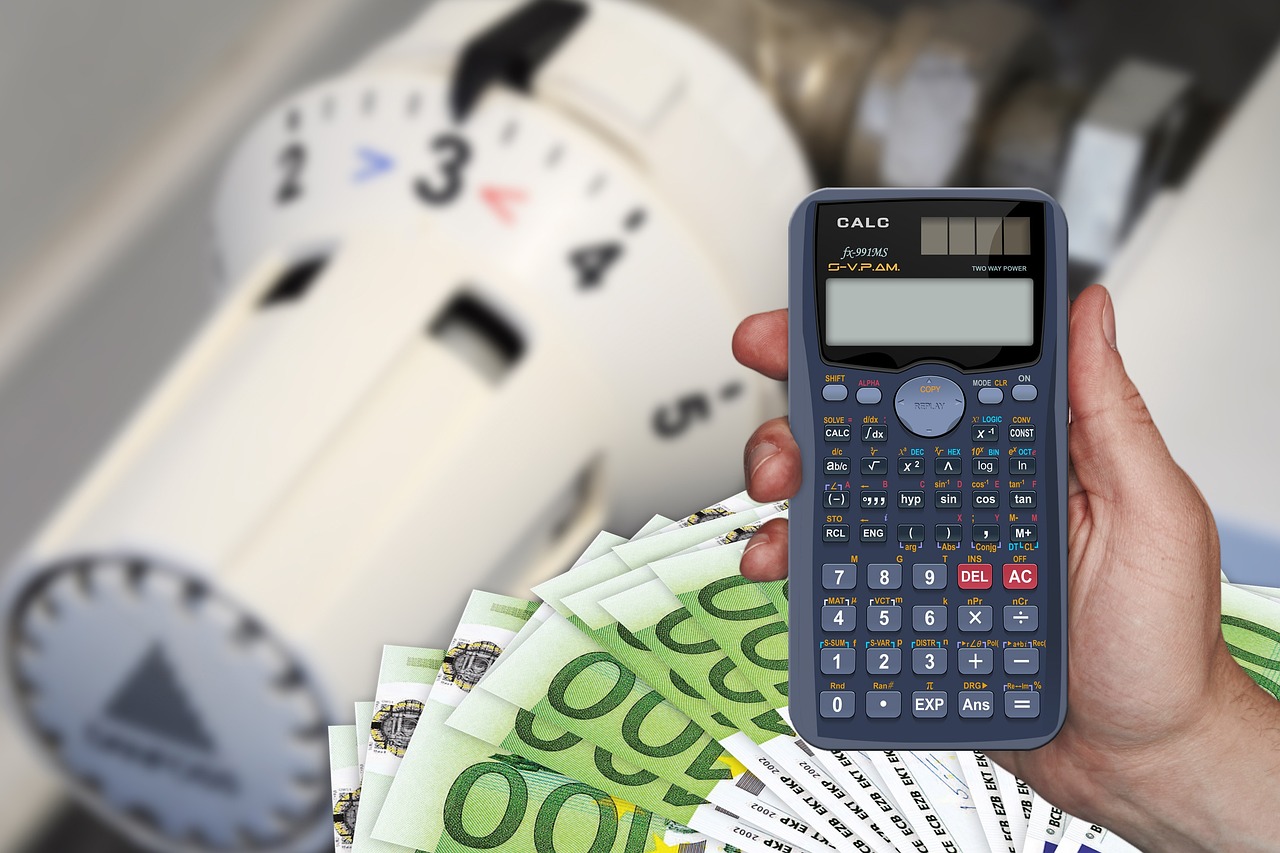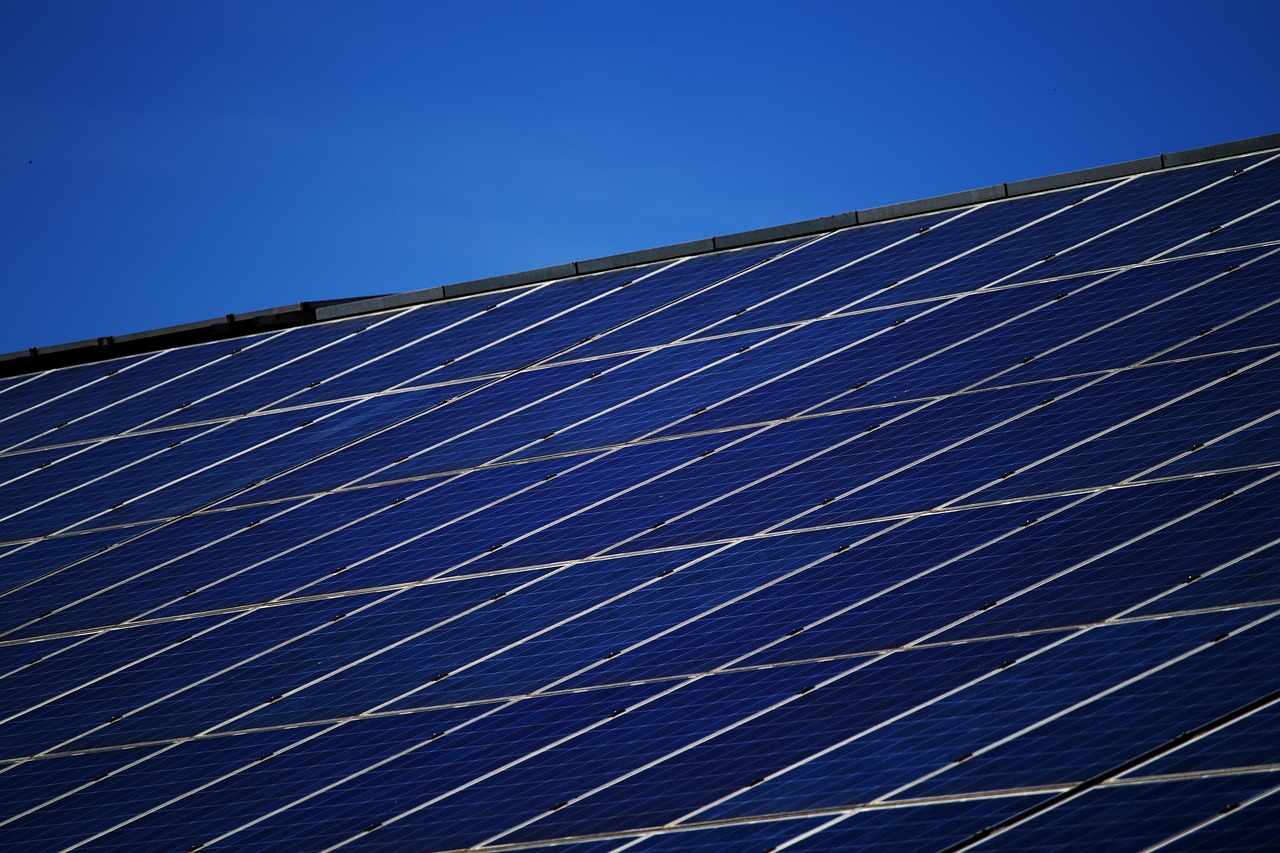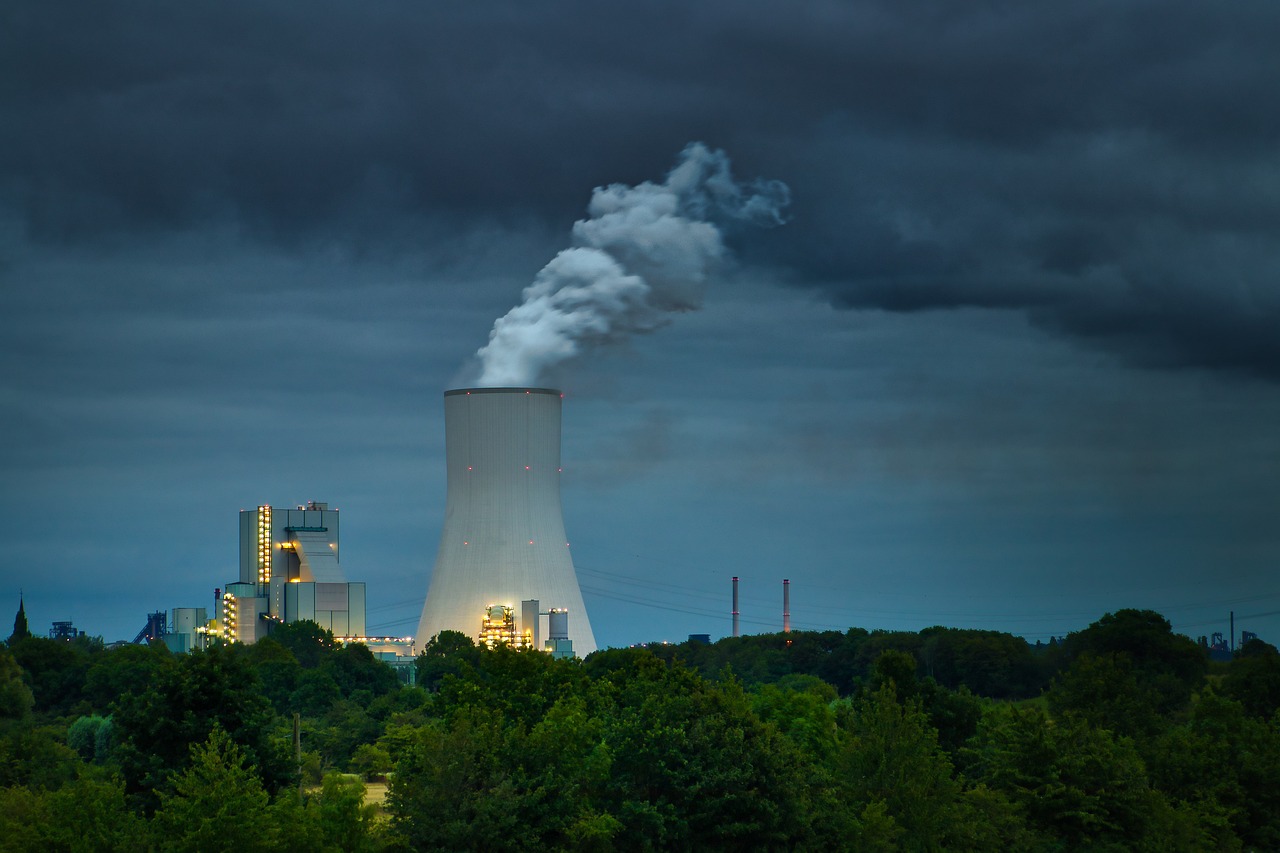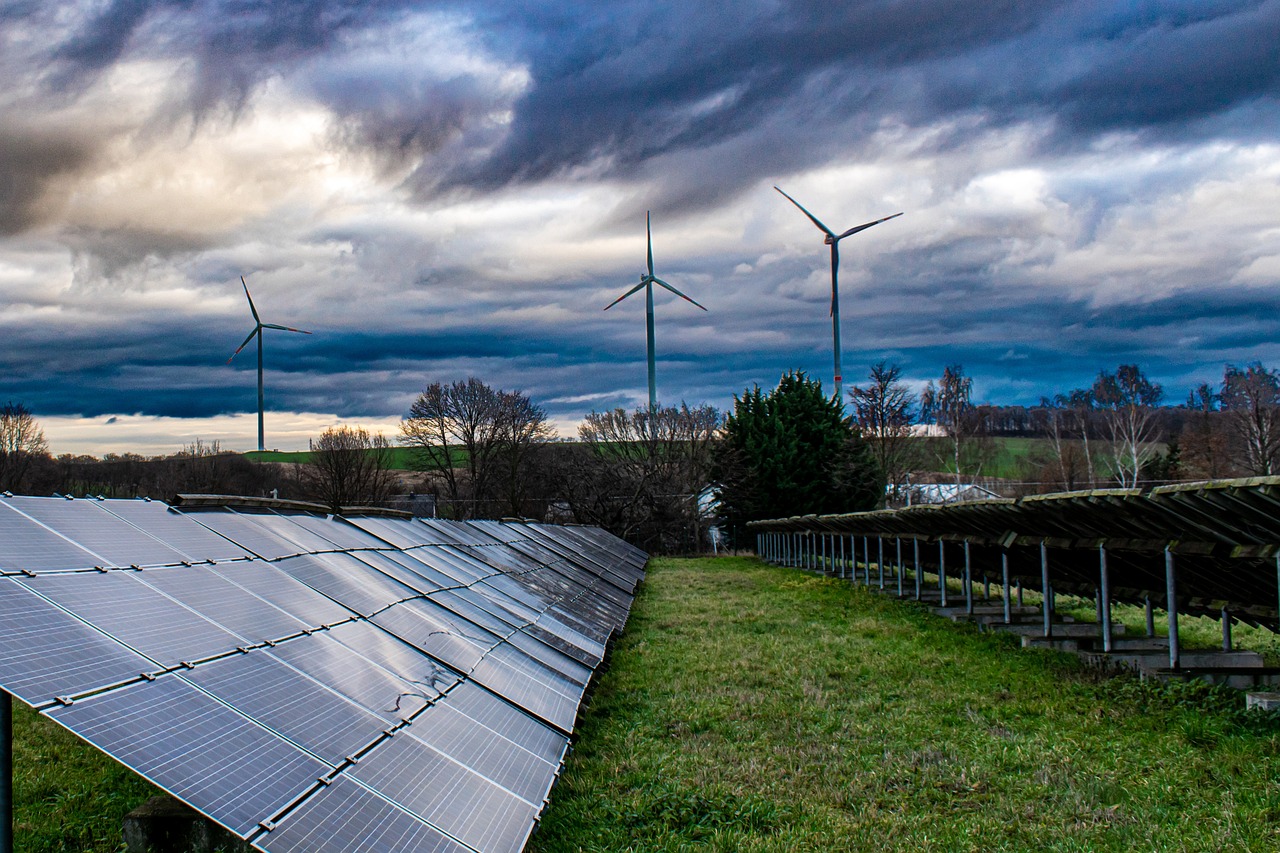Green Energy Solutions for Homeowners - Is it Worth the Investment?
In today's world, where environmental concerns are at the forefront of global discussions, homeowners are increasingly considering green energy solutions as a viable option. But the big question remains: is it really worth the investment? With rising energy costs and the urgent need to combat climate change, many are looking for alternatives that not only save money but also contribute to a healthier planet. Imagine transforming your home into a powerhouse of clean energy, reducing your carbon footprint while enjoying lower utility bills. Sounds appealing, right? In this article, we will explore various green energy options available to homeowners, evaluating their benefits, costs, and long-term impacts on both the environment and personal finances.
Green energy refers to renewable energy sources that have a minimal environmental impact. This includes energy derived from natural processes that are continuously replenished, such as sunlight, wind, and geothermal heat. The significance of adopting green energy solutions cannot be overstated; they play a crucial role in combating climate change and promoting sustainability. By transitioning to these energy sources, homeowners not only contribute to a cleaner environment but also position themselves as part of a growing movement towards sustainable living.
Homeowners have a variety of green energy solutions at their disposal. From solar panels to wind turbines and geothermal systems, each option has its unique functionality and benefits. Understanding these options can help homeowners make informed decisions based on their specific needs and environmental conditions. Let's delve into some of the most popular green energy solutions:
Solar panels are perhaps the most recognized green energy solution. They convert sunlight into electricity, providing a clean energy source for homes. The process is relatively straightforward: solar cells absorb sunlight and convert it into direct current (DC) electricity, which is then converted into alternating current (AC) for home use. With advancements in technology, solar systems have become more efficient and affordable. Homeowners can enjoy significant savings on energy bills, especially in sunny regions where sunlight is abundant.
Understanding the costs involved in installing solar panels is crucial for homeowners. Initial expenses can vary widely based on the size of the system and the specific installation requirements. On average, the cost of a residential solar panel system can range from $15,000 to $25,000 before any incentives. However, potential financing options, such as solar loans or leases, can help spread the cost over time. When you consider the long-term savings on utility bills, many homeowners find that the investment pays off within a few years.
To encourage the adoption of solar energy, many governments offer incentives that can significantly reduce the financial burden of solar installation. These may include:
- Tax credits
- Rebates
- Low-interest loans
These incentives can cover a substantial portion of the installation costs, making solar energy more accessible to homeowners. It's essential to research local programs and take advantage of these opportunities to maximize savings.
Wind turbines can also be an effective way to harness natural energy. However, their feasibility depends on various factors, including location and average wind speeds. Homeowners interested in wind energy should conduct a site assessment to determine if their property is suitable for a wind turbine installation. While these systems can be more complex than solar panels, they can provide substantial energy savings in the right conditions.
Investing in green energy solutions can lead to significant financial benefits. Homeowners can experience long-term savings on energy bills, which can add up to thousands of dollars over the years. Additionally, properties equipped with green energy systems often see an increase in property value. Studies have shown that homes with solar panels sell for more than those without. The payback period for these investments varies, but many homeowners recoup their initial costs within 5 to 10 years.
Beyond financial considerations, adopting green energy solutions contributes to environmental conservation. By reducing reliance on fossil fuels, homeowners can significantly lower their carbon footprints. This shift not only helps combat climate change but also promotes a sustainable future for the planet. Picture a world where clean energy is the norm, and our air and water are free from pollution—this is the vision that green energy solutions help to realize.
While green energy solutions offer many benefits, there are challenges to consider. Initial installation costs can be daunting, and maintenance may require additional investment. Furthermore, energy efficiency can vary based on the technology used and the specific circumstances of each home. Homeowners should conduct thorough research and possibly consult with energy experts to ensure they choose the best solution for their needs.
- What are the primary benefits of green energy solutions? Green energy solutions can lead to lower energy bills, increased property value, and a reduced environmental impact.
- Are there financing options available for green energy installations? Yes, many homeowners can access loans, leases, and government incentives to help offset initial costs.
- How long does it take to recoup the investment in solar panels? The payback period typically ranges from 5 to 10 years, depending on various factors such as energy usage and local incentives.

Understanding Green Energy
Green energy is not just a buzzword; it's a vital part of our journey towards a sustainable future. So, what exactly is green energy? In simple terms, it refers to energy derived from renewable resources that have a minimal environmental impact. This includes sources like solar, wind, hydro, and geothermal energy. Unlike fossil fuels, which release harmful pollutants and contribute to climate change, green energy harnesses natural processes to generate power, making it a cleaner and more sustainable choice.
One of the most significant advantages of green energy is its role in combating climate change. By utilizing renewable resources, we can significantly reduce our carbon footprint. Imagine if every household switched to green energy solutions; the collective impact could be monumental! Not only does this shift help mitigate the effects of global warming, but it also promotes biodiversity and protects ecosystems that are threatened by pollution and habitat destruction.
Moreover, green energy is synonymous with sustainability. It promotes a model of energy consumption that ensures future generations will have access to the resources they need. Just think of it as planting a tree; while it might take years to grow and bear fruit, the long-term benefits are undeniable. By investing in green energy today, we are ensuring a healthier planet for tomorrow.
To truly appreciate the significance of green energy, let's consider a few key points:
- Renewable Resources: These are resources that can be replenished naturally over time, such as sunlight, wind, and water.
- Minimal Environmental Impact: Green energy sources produce little to no greenhouse gas emissions, making them far less harmful than traditional energy sources.
- Energy Independence: By investing in local green energy solutions, homeowners can reduce their reliance on imported fossil fuels.
In summary, understanding green energy is crucial for homeowners looking to make informed decisions about their energy consumption. Not only does it offer a way to reduce costs in the long run, but it also empowers individuals to take part in the fight against climate change. Embracing green energy is not just an investment in your home; it's an investment in the future of our planet.

Types of Green Energy Solutions
When it comes to embracing a more sustainable lifestyle, homeowners have a plethora of green energy solutions at their fingertips. Each option comes with its own set of advantages, making it essential to understand how they work and which might be the best fit for your home. From harnessing the power of the sun to utilizing the wind, let's dive into some of the most popular green energy solutions available today.
Solar energy systems are perhaps the most well-known green energy solution. These systems use solar panels to convert sunlight into electricity. Imagine your roof as a mini power plant, soaking up the sun's rays and turning them into energy to power your home. Not only do solar panels help reduce your reliance on fossil fuels, but they can also lead to significant savings on your energy bills over time. However, the effectiveness of solar panels can vary based on location, roof orientation, and local climate.
Another promising option is wind energy solutions. Wind turbines, which can be installed on residential properties, capture wind energy and convert it into electricity. Picture a sleek turbine spinning gracefully in your backyard, generating clean energy as the wind whips around it. While wind energy can be incredibly efficient, it's essential to assess whether your property is suitable for a turbine, as this solution requires consistent wind speeds and adequate space for installation.
Geothermal systems are another fascinating green energy solution. These systems use the earth's stable underground temperature to heat and cool your home. Think of it as tapping into the earth's natural thermostat! By installing a series of pipes underground, geothermal systems can provide efficient heating in the winter and cooling in the summer, significantly reducing energy consumption. However, the initial installation can be costly, and it requires sufficient land and proper site assessment.
In addition to these primary options, homeowners might also explore biomass energy, which involves using organic materials like wood pellets or agricultural waste to generate heat or electricity. This solution is particularly appealing for those with access to abundant biomass resources. Furthermore, hydropower can also be considered if you have a suitable water source on your property, although this option is less common for residential use.
Ultimately, the choice of green energy solution depends on various factors, including your location, budget, and energy needs. It's crucial to conduct thorough research and possibly consult with a professional to determine which option aligns best with your goals for sustainability and energy efficiency.
As you consider these green energy solutions, keep in mind that the transition to renewable energy is not just about saving money; it's also about making a positive impact on the environment. Every small step counts toward a more sustainable future, and choosing the right green energy solution can be a significant leap in that direction.
- What is the most cost-effective green energy solution for homeowners? Solar energy systems are often considered the most cost-effective option due to decreasing installation costs and available incentives.
- How much can I save on my energy bills with solar panels? Homeowners can save anywhere from 20% to 50% on their energy bills, depending on their location and energy usage.
- Are there any government incentives for installing green energy systems? Yes, many governments offer tax credits, rebates, and financing programs to encourage the adoption of renewable energy.
- How do I know if my home is suitable for wind energy? A site assessment can determine wind speeds and land availability, which are crucial for installing a wind turbine.

Solar Energy Systems
Solar energy systems are revolutionizing how homeowners harness energy, transforming sunlight into electricity with remarkable efficiency. At its core, a solar energy system consists of solar panels, which are typically installed on rooftops or in open spaces, and an inverter that converts the captured sunlight into usable electrical power. This technology not only provides a clean and renewable energy source but also offers homeowners a way to significantly reduce their energy bills. Imagine waking up every morning knowing that the sun is not just shining, but also powering your home!
When considering the installation of solar panels, it's essential to understand the entire process. The journey begins with a site assessment, where professionals evaluate your home’s solar potential. Factors such as roof orientation, shading from trees or buildings, and the overall size of your roof play a crucial role in determining how much energy you can generate. Once the assessment is complete, the installation process can take anywhere from a few days to a week, depending on the system's complexity. The excitement of watching your home transition to solar power is truly unparalleled!
One of the most appealing aspects of solar energy systems is the potential savings on energy bills. Homeowners can often see a significant reduction in their monthly expenses, sometimes even eliminating them entirely. To illustrate this point, let’s consider an example: a typical household that spends around $150 per month on electricity could save approximately $1,800 annually with a properly installed solar system. Over a span of 25 years, that’s a whopping $45,000! Who wouldn’t want to keep that money in their pocket?
However, it’s not just about the immediate savings. Investing in solar energy can also increase your home's value. A study by the National Renewable Energy Laboratory found that homes with solar energy systems sell for about 4.1% more than comparable homes without them. This means that not only are you saving money on energy bills, but you’re also making a smart investment for your future.
In summary, solar energy systems are a viable and rewarding option for homeowners looking to embrace green energy. The combination of reduced energy costs, increased property value, and the satisfaction of contributing to a sustainable future makes solar power an attractive investment. Are you ready to take the plunge into solar energy and enjoy the benefits it brings?
- How much do solar panels cost? The cost can vary widely based on the size of the system and installation specifics, but on average, homeowners can expect to pay between $15,000 and $25,000 before any incentives.
- How long do solar panels last? Most solar panels come with a warranty of 25 years, but they can continue to produce electricity for 30 years or more with proper maintenance.
- Do I need to maintain my solar panels? While solar panels require minimal maintenance, it's recommended to clean them periodically and have them inspected by professionals every few years to ensure optimal performance.

Cost of Solar Installation
When it comes to investing in solar energy, understanding the costs involved is crucial for homeowners. The initial investment for solar panel installation can seem daunting, but breaking it down into manageable components can help clarify the overall financial picture. Typically, the costs can vary significantly based on factors such as the size of the system, the type of solar panels chosen, and the installation complexities.
On average, homeowners can expect to pay anywhere from $15,000 to $30,000 for a complete solar panel system, including installation. This price range can be influenced by:
- The size of the solar system: Larger systems that generate more electricity will naturally cost more.
- The type of panels: High-efficiency panels may have a higher upfront cost but can lead to greater savings over time.
- The installation location: Roof type and orientation can affect installation costs and efficiency.
One of the most significant aspects of solar installation costs is the availability of financing options. Homeowners can explore various methods to ease the financial burden, such as:
- Solar loans: These allow homeowners to pay off their solar system over time, often with low-interest rates.
- Leasing options: Homeowners can lease solar panels, paying a monthly fee instead of an upfront cost.
- Power Purchase Agreements (PPAs): This allows homeowners to buy the electricity generated by the solar system at a predetermined rate.
While the initial costs can be significant, it's essential to consider the long-term savings. Many homeowners experience a reduction in their electricity bills, sometimes up to 70%. Over time, these savings can offset the installation costs, making solar energy a wise financial investment.
Moreover, solar installations can increase the value of your home. According to recent studies, homes with solar energy systems sell for an average of 4.1% more than those without. This boost in property value can further justify the upfront costs.
In conclusion, while the may seem high initially, the combination of financing options, long-term savings, and increased property value makes it an attractive investment for many homeowners. As you weigh your options, consider all these factors to determine what works best for your situation.
1. What is the average cost of installing solar panels?
The average cost typically ranges from $15,000 to $30,000, depending on various factors.
2. Are there financing options available for solar installation?
Yes, homeowners can explore solar loans, leasing options, and Power Purchase Agreements (PPAs) to ease the financial burden.
3. How much can I save on my electricity bill with solar panels?
Many homeowners experience a reduction of up to 70% on their electricity bills after installing solar panels.
4. Does installing solar panels increase my home’s value?
Yes, homes with solar energy systems typically sell for an average of 4.1% more than those without.

Government Incentives and Rebates
When it comes to investing in green energy solutions, one of the most appealing aspects is the array of available to homeowners. These financial aids are designed to make the transition to renewable energy more accessible and affordable. Imagine being able to harness the power of the sun or wind while also receiving a little financial boost from your government—sounds like a win-win, right?
In many regions, federal, state, and local governments offer various programs aimed at encouraging homeowners to adopt sustainable energy practices. For instance, in the United States, the Federal Investment Tax Credit (ITC) allows homeowners to deduct a significant percentage of the cost of installing solar energy systems from their federal taxes. This can translate into substantial savings, making solar energy not just environmentally friendly, but also financially viable.
Moreover, many states have their own specific rebates and incentives. These can include:
- Cash rebates: Some states offer direct cash rebates for installing solar panels or wind turbines, providing immediate financial relief.
- Property tax exemptions: In various states, homeowners may not have to pay increased property taxes on the value added by renewable energy systems.
- Net metering: This allows homeowners to sell excess energy back to the grid, potentially earning credits that can offset future electricity bills.
Additionally, many utilities have their own incentive programs that can further reduce the upfront costs of installation. These programs vary widely, so it's crucial for homeowners to research what is available in their area. Some utility companies even offer financing options that allow homeowners to pay for their systems over time, making the transition to green energy even more manageable.
However, it's essential to act quickly, as many of these incentives are subject to change or may have limited funding. Homeowners should consult with local energy experts or visit government websites to stay updated on the latest offerings. By taking advantage of these incentives, not only can homeowners save money upfront, but they can also enhance their long-term energy savings, paving the way for a more sustainable future.
Q: What types of government incentives are available for solar energy?
A: Incentives can include tax credits, cash rebates, property tax exemptions, and net metering programs. The specific offerings vary by region, so it's best to check local resources.
Q: How much can I save with these incentives?
A: Savings can vary widely, but many homeowners can recoup a significant portion of their installation costs through these incentives, potentially saving thousands of dollars over the life of their systems.
Q: Are there incentives for other green energy solutions?
A: Yes, many incentives are available for wind energy, geothermal systems, and energy efficiency upgrades. Always check local and state programs for specific details.
Q: Do I need to apply for these incentives?
A: In most cases, yes. Some incentives require pre-approval, while others can be claimed when filing taxes. It's essential to understand the application process for each incentive.

Wind Energy Solutions
Wind energy solutions are becoming increasingly popular among homeowners looking to reduce their reliance on traditional energy sources. Harnessing the power of the wind can be an effective way to generate clean, renewable energy right from your backyard. But how does it work? Essentially, wind turbines convert the kinetic energy of wind into mechanical power, which can then be transformed into electricity. This process not only helps in cutting down electricity bills but also contributes to a greener planet.
Before jumping into the installation of a wind turbine, it's essential to consider several factors. First, the site assessment is crucial. Not every location is suitable for wind energy generation. Homeowners should evaluate wind speeds in their area, which can be done through local weather data or by using an anemometer. Ideally, a site should have an average wind speed of at least 10 miles per hour to make wind energy feasible. Additionally, the height of the turbine plays a significant role in capturing wind energy, as wind speeds tend to increase with altitude.
Once you've determined that your location is suitable, the next step is the installation process. Installing a wind turbine involves several steps, including obtaining necessary permits, selecting the right turbine size, and ensuring proper installation to maximize efficiency. Homeowners can choose from different types of turbines, such as horizontal-axis or vertical-axis wind turbines, each with its own set of advantages and disadvantages. For example, horizontal-axis turbines are more common and generally more efficient, while vertical-axis turbines can be more suitable for residential areas due to their compact design and lower noise levels.
Now, let's talk about the cost. The initial investment for wind turbines can be significant, often ranging from $10,000 to $70,000, depending on the turbine size and installation requirements. However, the long-term savings can be substantial. Homeowners can save on energy bills and may even receive credits for excess energy produced. Furthermore, many states offer incentives and rebates to encourage the adoption of renewable energy solutions, making the transition to wind energy more financially viable.
To give you a clearer picture, here's a simple
| Benefits | Considerations |
|---|---|
| Reduces electricity bills | High initial investment |
| Generates clean energy | Site suitability |
| Potential tax incentives | Noise and aesthetic concerns |
| Increases property value | Maintenance requirements |
In conclusion, wind energy solutions can provide homeowners with a sustainable and cost-effective way to generate electricity. However, careful consideration of site conditions, costs, and local regulations is essential before making the leap. By embracing wind energy, you not only invest in your future but also contribute to a cleaner and more sustainable world.
Q: How much energy can a residential wind turbine generate?
A: The energy generated can vary widely based on the turbine size and wind conditions, but a typical residential turbine can produce between 400 kWh and 1,000 kWh per month.
Q: Are there any maintenance requirements for wind turbines?
A: Yes, wind turbines require regular maintenance, including inspections and occasional repairs to ensure they operate efficiently.
Q: What are the zoning laws regarding wind turbines?
A: Zoning laws vary by location, so it's essential to check with local regulations before installing a wind turbine on your property.
Q: Can I install a wind turbine in a residential area?
A: Yes, but you must consider local zoning laws and the potential impact on your neighbors, including noise and aesthetics.

Evaluating the Return on Investment
When it comes to investing in green energy solutions, homeowners often ask themselves, "Is this really worth it?" The answer is a resounding yes, but let's break it down. Investing in renewable energy not only helps the environment but also has significant financial implications. First off, consider the long-term savings on energy bills. By harnessing the power of the sun or wind, you can drastically reduce or even eliminate your monthly electricity expenses. Imagine not having to worry about fluctuating energy prices! Instead of paying your utility company, you could be investing that money back into your home or saving for a rainy day.
Now, let's talk about property value. Homes equipped with green energy solutions often see an increase in market value. Buyers today are more environmentally conscious and prefer homes that are energy-efficient. A study from the National Renewable Energy Laboratory found that homes with solar panels sell for about 4.1% more than comparable homes without them. So, not only are you saving money while living in your home, but you’re also making a smart investment for the future.
To give you a clearer picture, let’s look at a simple breakdown of potential savings and payback periods for different green energy systems:
| Green Energy System | Initial Cost | Annual Savings | Payback Period |
|---|---|---|---|
| Solar Panels | $15,000 | $1,500 | 10 years |
| Wind Turbines | $30,000 | $2,000 | 15 years |
| Geothermal Systems | $20,000 | $1,800 | 11 years |
As you can see from the table, while the initial costs might seem daunting, the long-term savings can be significant. The payback periods are relatively short compared to the lifespan of these systems, which can last over 25 years. This means that after you’ve recouped your investment, you’re looking at years of free energy!
Furthermore, there are tax incentives and rebates available that can significantly reduce the upfront costs, making the investment even more attractive. For instance, in many regions, homeowners can receive tax credits that cover a portion of the installation costs, effectively shortening the payback period even further.
In summary, evaluating the return on investment for green energy solutions is about more than just immediate costs. It’s about understanding the long-term benefits that can transform your financial landscape. By investing in green energy, you’re not only taking a step towards a more sustainable future but also making a financially sound decision that can pay dividends for years to come.
- What is the average lifespan of solar panels? Solar panels typically last between 25 to 30 years, making them a long-term investment.
- Are there maintenance costs associated with green energy systems? Yes, while they require minimal maintenance, it's wise to budget for occasional inspections and repairs.
- How can I find out about local incentives? Check with your local government or energy provider for information on available rebates and tax credits.

Environmental Impact Assessment
When we talk about green energy solutions, we're not just discussing a trend; we're diving into a crucial conversation about our planet's future. Adopting these solutions is like planting a seed for sustainability, which can flourish into a healthier environment. But how exactly do these energy sources impact our surroundings? Let’s break it down.
First off, the most significant advantage of green energy is its ability to reduce carbon emissions. Traditional energy sources, like coal and natural gas, are notorious for their high levels of greenhouse gases. In contrast, renewable sources such as solar and wind power emit little to no carbon dioxide during operation. For instance, a typical household that switches to solar energy can cut down its carbon footprint by an impressive amount—often equivalent to planting dozens of trees each year!
Moreover, green energy solutions contribute significantly to air and water quality. By reducing reliance on fossil fuels, we’re not only decreasing air pollution but also protecting our water systems from contamination. Think about it: fewer pollutants in the air means cleaner breathing for everyone, and less runoff from energy production means healthier rivers and lakes. This is crucial for communities that depend on these water sources for drinking and recreation.
However, it’s essential to consider the full lifecycle impact of green energy technologies. This includes everything from manufacturing and installation to decommissioning and recycling. For instance, while solar panels generate clean energy, the production process can involve harmful chemicals. However, advancements in technology are continuously improving the sustainability of these processes. According to recent studies, the environmental benefits of using solar energy far outweigh the initial impacts of production.
To give you a clearer picture, here’s a quick comparison of the environmental impacts of various energy sources:
| Energy Source | Carbon Emissions | Water Usage | Land Use |
|---|---|---|---|
| Coal | High | High | High |
| Natural Gas | Medium | Medium | Medium |
| Solar | Low | Low | Low to Medium (depending on installation) |
| Wind | Low | Low | Medium (land for turbines) |
In summary, the of green energy solutions reveals a clear advantage over traditional energy sources. Not only do these alternatives help in reducing harmful emissions, but they also promote cleaner air and water, contributing to a more sustainable future for all. While there are challenges to consider, the long-term benefits for both our planet and our health are undeniable. Investing in green energy is not just a financial decision; it’s a commitment to a better world.
- What are the main benefits of switching to green energy?
Switching to green energy can significantly reduce your carbon footprint, enhance air and water quality, and often lead to long-term savings on energy bills. - Are there any drawbacks to green energy solutions?
While the benefits are substantial, initial installation costs and maintenance can be challenges. Additionally, some technologies may have environmental impacts during production. - How can I assess the environmental impact of my current energy source?
You can evaluate the carbon emissions, water usage, and overall sustainability of your current energy source compared to renewable options.

Challenges and Considerations
While the allure of green energy solutions is undeniable, it's essential for homeowners to approach this investment with a clear understanding of the potential challenges and considerations that accompany it. First and foremost, the initial costs associated with installing systems like solar panels or wind turbines can be quite significant. Many homeowners find themselves faced with a hefty price tag upfront, which can be daunting. It’s crucial to conduct thorough research and assess whether the long-term savings on energy bills will outweigh these initial expenditures.
Moreover, the maintenance of green energy systems is another aspect that shouldn't be overlooked. While many systems are designed to be low-maintenance, they still require periodic checks and potential repairs. For instance, solar panels may need cleaning to maintain efficiency, while wind turbines might require inspections to ensure they are functioning optimally. Homeowners should be prepared for these ongoing responsibilities, which can sometimes add to the overall cost of ownership.
Another consideration is the energy efficiency of your home. Before investing in green energy solutions, it's wise to evaluate your home’s current energy consumption. If your home is not energy-efficient, the benefits of switching to renewable energy sources may not be fully realized. Homeowners might need to invest in additional upgrades, such as better insulation or energy-efficient appliances, to maximize their green energy investment.
Additionally, not every home is suitable for all types of green energy solutions. For example, solar panels require ample sunlight, meaning homes in shaded areas or with less favorable climates may not benefit as much. Similarly, wind energy systems need adequate wind speeds to be effective, which may not be present in every location. Therefore, conducting a thorough site assessment is crucial before making any decisions.
To further illustrate these challenges, consider the following table that outlines some common issues homeowners face when investing in green energy:
| Challenge | Description |
|---|---|
| Initial Costs | High upfront investment can be a barrier for many homeowners. |
| Maintenance | Regular checks and repairs may be necessary to maintain efficiency. |
| Energy Efficiency | Existing energy inefficiencies can hinder the effectiveness of green energy solutions. |
| Site Suitability | Not all homes are ideal for every type of green energy system. |
Ultimately, while the journey towards adopting green energy solutions is filled with exciting possibilities, it’s crucial to tread carefully and consider all aspects of the investment. Homeowners should weigh the pros and cons, conduct thorough research, and perhaps consult with professionals in the field to make informed decisions that align with their financial and environmental goals.
Q1: What is the average cost of installing solar panels?
A1: The average cost can vary widely based on the size of the system and location, but it typically ranges from $15,000 to $25,000 before incentives.
Q2: How long does it take to see a return on investment for solar energy?
A2: Most homeowners can expect to see a return on their investment within 5 to 10 years, depending on energy costs and local incentives.
Q3: Are there financing options available for green energy solutions?
A3: Yes, many lenders offer financing specifically for green energy projects, including solar loans and home equity lines of credit.
Q4: What maintenance do wind turbines require?
A4: Wind turbines typically require annual inspections, and any necessary repairs or parts replacement should be addressed promptly to ensure optimal performance.
Frequently Asked Questions
- What is green energy?
Green energy refers to renewable energy sources that have a minimal environmental impact. These sources, such as solar, wind, and geothermal energy, are crucial in combating climate change and promoting sustainability.
- How do solar panels work?
Solar panels convert sunlight into electricity through photovoltaic cells. When sunlight hits these cells, it generates direct current (DC) electricity, which is then converted into alternating current (AC) electricity for home use.
- What are the costs associated with installing solar panels?
The cost of installing solar panels can vary widely based on system size, installation complexity, and location. Homeowners should consider initial expenses, potential financing options, and long-term savings on energy bills when evaluating costs.
- Are there government incentives for solar energy?
Yes, many governments offer incentives such as tax credits, rebates, and financing programs to encourage homeowners to adopt solar energy. These incentives can significantly reduce the overall cost of installation.
- Can homeowners benefit from wind energy solutions?
Absolutely! Wind energy can be a viable option for homeowners, especially in areas with consistent wind patterns. However, site assessments and installation requirements should be carefully considered before proceeding.
- What is the return on investment for green energy solutions?
Investing in green energy solutions can lead to significant long-term savings on energy bills, potential increases in property value, and relatively quick payback periods depending on the system and location.
- How do green energy solutions impact the environment?
Green energy solutions help reduce carbon footprints by utilizing renewable sources, which lowers greenhouse gas emissions and contributes to environmental conservation, promoting a sustainable future for the planet.
- What challenges should homeowners consider before investing?
While green energy solutions offer many benefits, challenges such as initial installation costs, ongoing maintenance, and energy efficiency concerns should be carefully evaluated by homeowners before making an investment.



















